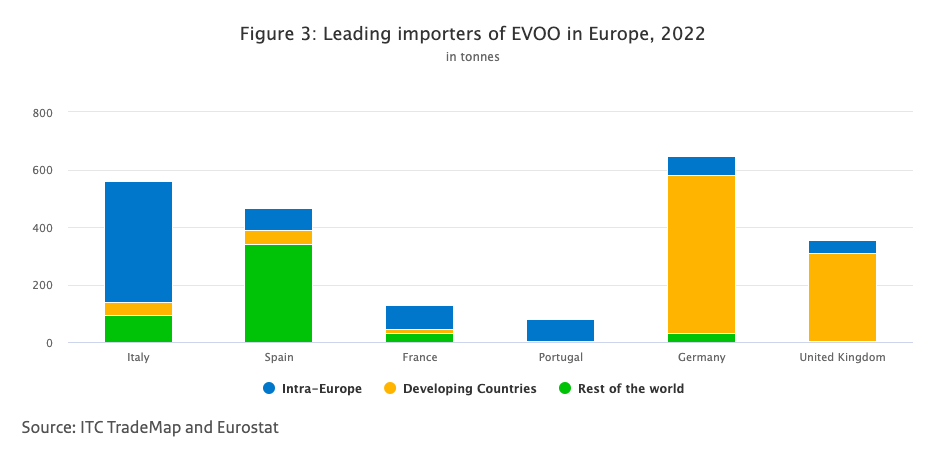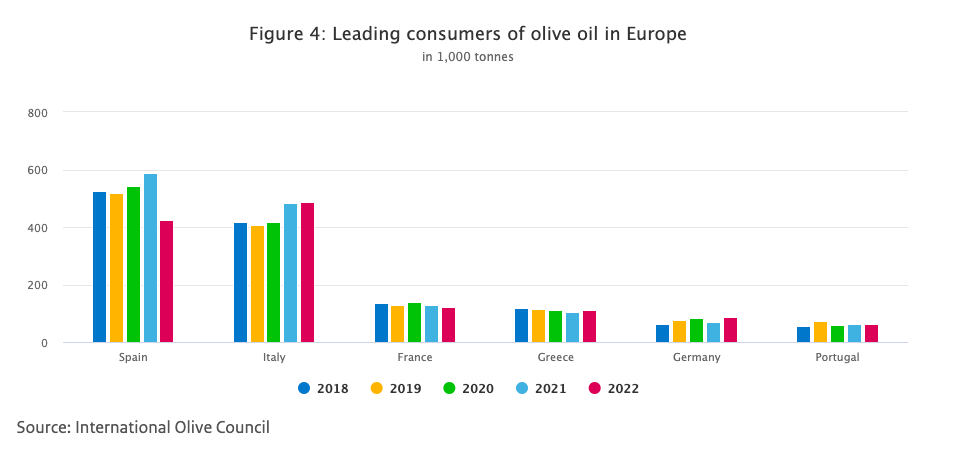Because it fries the price of olive oil

We are among the top three largest consumers of extra virgin olive oil in the world and represent 15% of global consumption, however we do not produce enough and in fact 3 out of 4 bottles are imported. But now there is also another problem: its price is skyrocketing. Facts, numbers and predictions
If lately olive oil has seemed more expensive than usual, it's not just an impression. This is actually the case. And even when inflation has slowed, its price has not decreased because there is not enough of it.
In fact, demand did not suddenly increase but temperatures did and this caused prices to rise to historic highs.
THE RECORD PRICE OF OLIVE OIL
In the last two years the cost of olives has skyrocketed, causing the price of oil to reach a peak (+32%) that it has not reached for 26 years . According to data from the International Monetary Fund (IMF), in fact, it is now close to 6,000 dollars per ton, which is the highest figure since 1997, when it reached 6,225 dollars.

DROUGHT MAKES SPAIN DRY…
This increase is caused by climate changes that affect all Mediterranean countries, but Spain, which is the main producer of olive oil in the world, is particularly feeling the effects of heat and drought.
Normally, Spain, which supplies more than 40% of global production, is expected to produce between 1.3 and 1.5 million tons of olive oil per harvest, according to the Center for Import Promotion. However, official data, reported by CNBC , showed that for the 2022/2023 campaign the country only cultivated around 666,000 metric tonnes and market operators expect production of between 830,000 and 850,000 tonnes for the 2023/2024 harvest, with an increase of approximately 40,000 tonnes compared to previous estimates.
The drop in production therefore means that, while continuing to hold the lead, Spain is now at a level comparable to that of its rivals and, as a result, the global market may continue to see rising prices.
…AND THE WHOLE MEDITERRANEAN AREA
In fact, in recent years, according to Kyle Holland, an analyst at the market research group Mintec, extreme climatic conditions have had a "significant impact" on olive oil production throughout southern Europe and therefore also in Italy and Greece – second (8.8%) and third (7.4%) producers in the world respectively. Both get around 300,000 tonnes a year each, significantly less than Spain.
Last year, according to Coldiretti , a harvest of 200,000 tonnes was expected in Greece compared to 350,000 in 2022 and Turkey's production was also decreasing. According to the association's estimates, in fact, in 2023 they should have dropped to around 280,000 tonnes, or around 100,000 tonnes less than the previous campaign. Only Tunisia seemed to be recovering.
THE DEFICIENCY OF OLIVE OIL IN ITALY
Since the quantity of olive oil produced in Italy is not sufficient, 3 out of 4 bottles consumed in our country are foreign, states Coldiretti , who reports that in 2022 Italian imports from abroad set the record of the century for a value of over 2.2 billion euros, with an increase of almost 20% in the first six months of 2023.

“A situation – observes the association – which exposes Italy to fluctuations in foreign production and to speculation on international markets”.
This is why supply chain agreements have been envisaged with the resources of the Pnrr "to have one million more new olive trees along the peninsula, increase production and reduce dependence on foreign countries".
“Italy – Coldiretti reports – is among the top three largest consumers of extra virgin olive oil in the world with around 480 million kilos, immediately after Spain and before the United States and represents 15% of world consumption”. Furthermore, according to a survey conducted on their website, "less than half of Italians (44%) carefully check the origin label to be sure they are putting an extra virgin olive oil obtained from made in Italy olives in their shopping cart".

WHAT ANALYSTS PREDICT
The analysts interviewed by CNBC do not seem entirely optimistic about the future because they believe that the decrease in olive oil reserves could keep the markets in tension due to possible sudden price peaks in the coming months.
“The point is, yes, prices seem to be going down right now, but eventually people will have to start buying. And when you buy in the face of decreasing volumes, they say that if volumes dry up and everyone needs to buy, then prices have to go up,” Holland explained.
“I think the biggest concern is actually the overall offering. People – continues the analyst – are quite bearish on the market at the moment, but as the season continues and we move further and further away from the harvest we just had, most market participants seem to think that the market is emptying."
“It's not a normal situation,” said Vito Martielli, an analyst at Rabobank, recalling that in his more than 20 years of studying the olive oil sector he has never seen the recent price volatility. “To have a clear vision – he added -, I think we will have to wait a couple of months, until the end of June, but the rains in March were a positive sign for the improvement in production”.
This is a machine translation from Italian language of a post published on Start Magazine at the URL https://www.startmag.it/economia/perche-il-prezzo-olio-di-oliva-si-infiamma/ on Wed, 15 May 2024 10:36:47 +0000.
